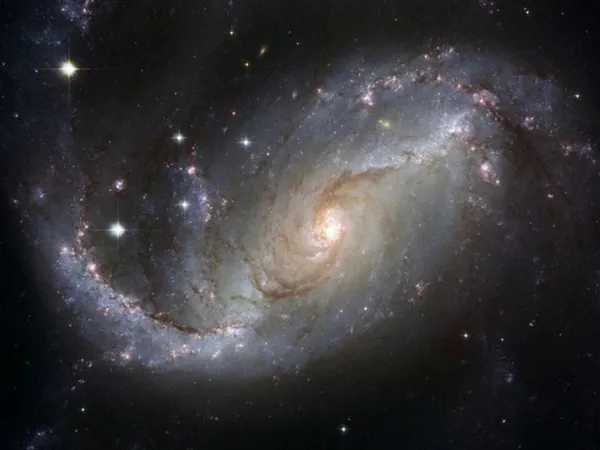
Astronomers Uncover Exciting Clues of Life on Distant Exoplanet!
2025-04-19
Author: Emma
A New Era of Discovery Beyond Our Solar System
In a groundbreaking revelation, astronomers have unearthed tantalizing evidence hinting at possible biological activity outside our solar system! Thanks to the advanced capabilities of the James Webb Space Telescope (JWST), researchers from the University of Cambridge have detected chemical indicators that could suggest the presence of life on the exoplanet K2-18b, located 124 light years away in the constellation of Leo.
The Chemistry of Life Detected!
The team has found traces of dimethyl sulfide (DMS) and/or dimethyl disulfide (DMDS) in K2-18b's atmosphere. On Earth, these molecules are exclusively produced by living organisms, particularly microbial life such as marine phytoplankton, raising exciting possibilities about what this could mean for extraterrestrial life.
Cautious Optimism: The Statistical Significance
While the findings are thrilling, researchers emphasize caution. The evidence currently holds a 'three-sigma' statistical significance, indicating there is only a 0.3% chance that these observations happened by random occurrence. To elevate their claim to a more formidable level of scientific discovery, the data needs to achieve a 'five-sigma' status, which is less than a 0.00006% chance of being coincidental.
Future Observations: The Quest for Confirmation
The scientists believe that an additional 16 to 24 hours of observation using JWST could potentially cement their findings and allow them to cross that critical five-sigma threshold for definitive classification.
Exploring K2-18b: A Hycean World?
K2-18b, nearly nine times the mass of Earth and significantly larger, is believed to be an ocean-covered world under a hydrogen-rich atmosphere. Previous studies have already identified methane and carbon dioxide in its atmosphere, solidifying its classification as a 'Hycean' planet within the habitable zone.
How Did They Capture This Exciting Evidence?
Astronomers glean insights into the atmospheric composition of distant worlds by analyzing starlight filtered through these planets as they transit their stars. JWST detects a dip in brightness and the chemical absorptions in the stellar spectrum, allowing scientists to identify various gases.
A Confirmatory Breakthrough?
The new observations employed the JWST's MIRI (Mid-Infrared Instrument) to explore wavelengths previously untested, adding a fresh layer of evidence to the potential signs of life. "This independent line of evidence was a strong confirmation of our initial signals," said Professor Nikku Madhusudhan, who spearheaded the research.
The Road Ahead: What Next for Exoplanet Exploration?
With DMS and DMDS identified as potential biosignatures, the astronomical community is buzzing with optimism. As scientists delve deeper into the possibilities that K2-18b offers, we may be on the brink of discovering whether we are truly alone in the universe!









 Brasil (PT)
Brasil (PT)
 Canada (EN)
Canada (EN)
 Chile (ES)
Chile (ES)
 Česko (CS)
Česko (CS)
 대한민국 (KO)
대한민국 (KO)
 España (ES)
España (ES)
 France (FR)
France (FR)
 Hong Kong (EN)
Hong Kong (EN)
 Italia (IT)
Italia (IT)
 日本 (JA)
日本 (JA)
 Magyarország (HU)
Magyarország (HU)
 Norge (NO)
Norge (NO)
 Polska (PL)
Polska (PL)
 Schweiz (DE)
Schweiz (DE)
 Singapore (EN)
Singapore (EN)
 Sverige (SV)
Sverige (SV)
 Suomi (FI)
Suomi (FI)
 Türkiye (TR)
Türkiye (TR)
 الإمارات العربية المتحدة (AR)
الإمارات العربية المتحدة (AR)